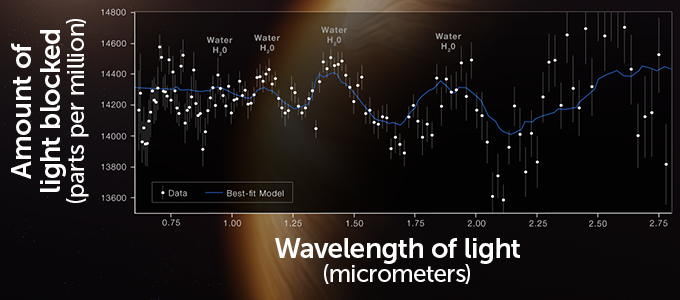Here are the James Webb Space Telescope’s stunning first pictures
President Biden revealed the NASA telescope's image of ancient galaxies whose light has been traveling 13 billion years to reach us.
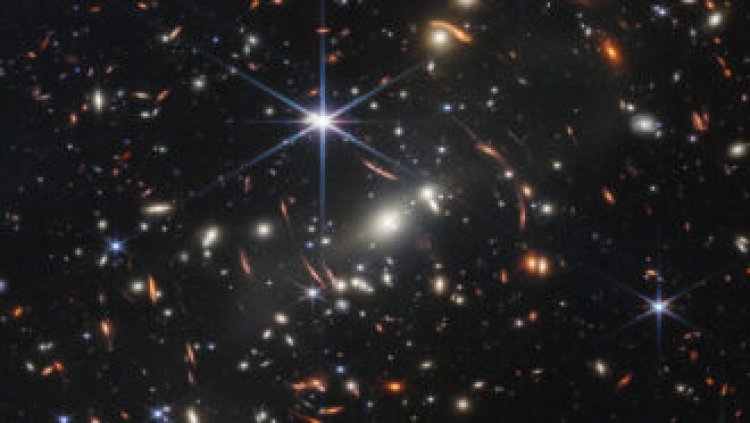
We’ve now seen farther, deeper and more clearly into space than ever before.
A stellar birthplace, a nebula surrounding a dying star, a group of closely interacting galaxies, the first spectrum of an exoplanet’s light. These are some of the first images from the James Webb Space Telescope, released in a NASA news briefing on July 12. This quartet of cosmic scenes follows on the heels of the very first image released from the telescope, a vista of thousands of distant galaxies, presented in a White House briefing on July 11.
“First of all, it’s really gorgeous. And it’s teeming with galaxies,” said JWST Operations Scientist Jane Rigby of NASA’s Goddard Space Flight Center in Greenbelt, Md., at the July 12 briefing. “That’s been true of every image we’ve taken with Webb. We can’t take [an image of] blank sky. Everywhere we look, there’s galaxies everywhere.”
Going deep
The galaxies captured in the first released image lie behind a cluster of galaxies about 4.6 billion light-years away. The mass from those closer galaxies distorts spacetime in such a way that objects behind the cluster are magnified, giving astronomers a way to peer more than 13 billion years into the early universe.
Even with that celestial assist, other existing telescopes could never see so far. But the James Webb Space Telescope, also known as JWST, is incredibly large — at 6.5 meters across, its mirror is nearly three times wider than that of the Hubble Space Telescope. It also sees in the infrared wavelengths of light where distant galaxies appear. Those features give it an edge over previous observatories.
“There’s a sharpness and a clarity we’ve never had,” Rigby said. “You can really zoom in and play around.”
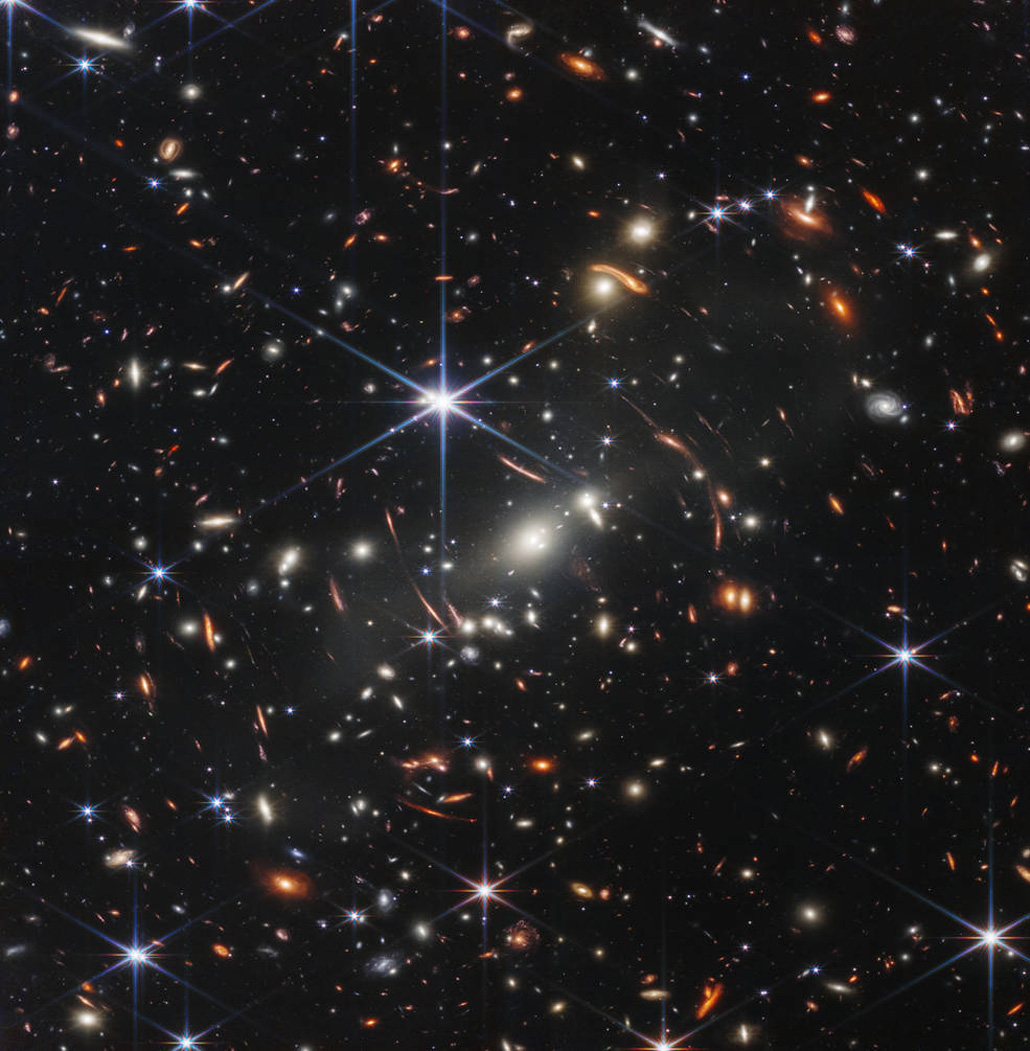
Although that first image represents the deepest view of the cosmos to date, “this is not a record that will stand for very long,” astronomer Klaus Pontoppidan of the Space Telescope Science Institute in Baltimore said in a June 29 news briefing. “Scientists will very quickly beat that record and go even deeper.”
But JWST wasn’t built only to peer deeper and farther back in time than ever before. The cache of first images and data showcases space scenes both near and far, glimpses of single stars and entire galaxies, and even a peek into the chemical composition of a far-off planet’s atmosphere.
“These are pictures just taken over a period of five days. Every five days, we’re getting more data,” said European Space Agency science advisor Mark McCaughrean. (JWST is an international collaboration among NASA, ESA and the Canadian Space Agency.) “It’s a culmination of decades of work, but it’s just the beginning of decades. What we’ve seen today with these images is essentially that we’re ready now.”
Cosmic cliffs
This image shows the “Cosmic Cliffs,” part of the enormous Carina nebula, a region about 7,600 light-years from Earth where many massive stars are being born. Some of the most famous Hubble Space Telescope images feature this nebula in visible light, but JWST shows it in “infrared fireworks,” Pontoppidan says. JWST’s infrared detectors can see through dust, so the nebula appears especially spangled with stars.
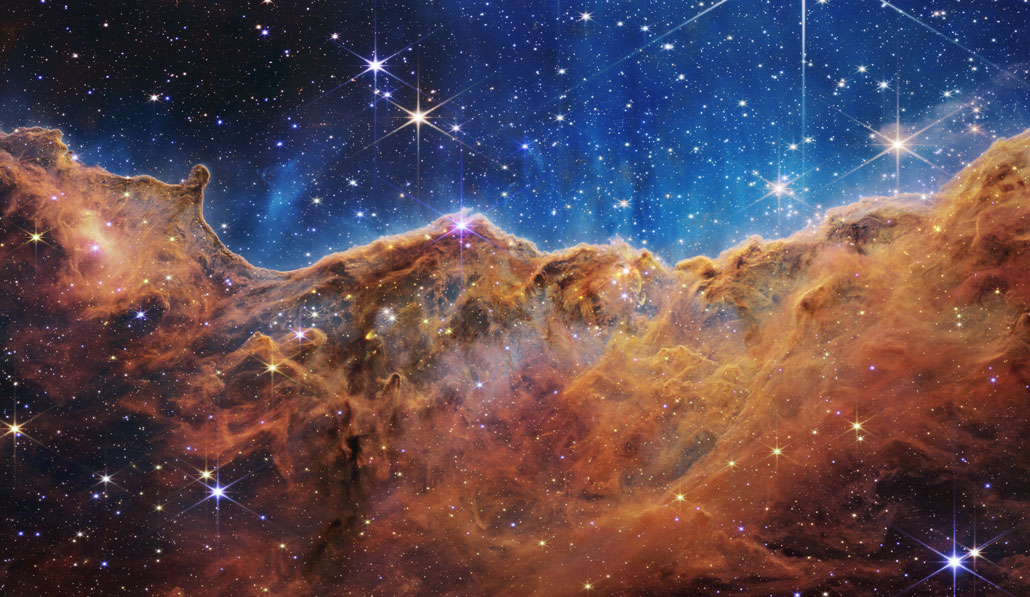
“We’re seeing brand new stars that were previously completely hidden from our view,” said NASA astrophysicist Amber Straughn.
But molecules in the dust itself are glowing too. Energetic winds from baby stars in the top of the image are pushing and sculpting the wall of gas and dust that runs across the middle. “We see examples of bubbles and cavities and jets that are being blown out from newborn stars,” Straughn said. And gas and dust are the raw material for new stars — and new planets.
“It reminds me that our sun and our planets, and ultimately us, were formed out of this same stuff that we see here,” Straughn said. “We humans really are connected to the universe. We’re made out of the same stuff.”
Foamy nebula
The Southern Ring nebula is an expanding cloud of gas that surrounds a dying star about 2,000 light-years from Earth. In previous Hubble images, the nebula looks like an oblong swimming pool with a fuzzy orange deck and a bright diamond, a white dwarf star, in the middle. JWST expands the view far beyond that, showing more tendrils and structures in the gas than previous telescopes could see.
“You see this bubbly, almost foamy appearance,” said JWST astronomer Karl Gordon. In the left hand image, which captures near-infrared light from JWST’s NIRCam instrument, the foaminess traces molecular hydrogen that formed as dust expanded away from the center. The center appears blue due to hot ionized gas heated by the leftover core of the star. Rays of light escape the nebula like the sun peeking through patchy clouds.
In the right hand image, taken by the MIRI mid-infrared camera, the outer rings look blue and trace hydrocarbons forming on the surface of dust grains. The MIRI image also reveals a second star in the nebula’s core.
“We knew this was a binary star, but we didn’t see much of the actual star that produced this nebula,” Gordon said. “Now in MIRI this star glows red.”
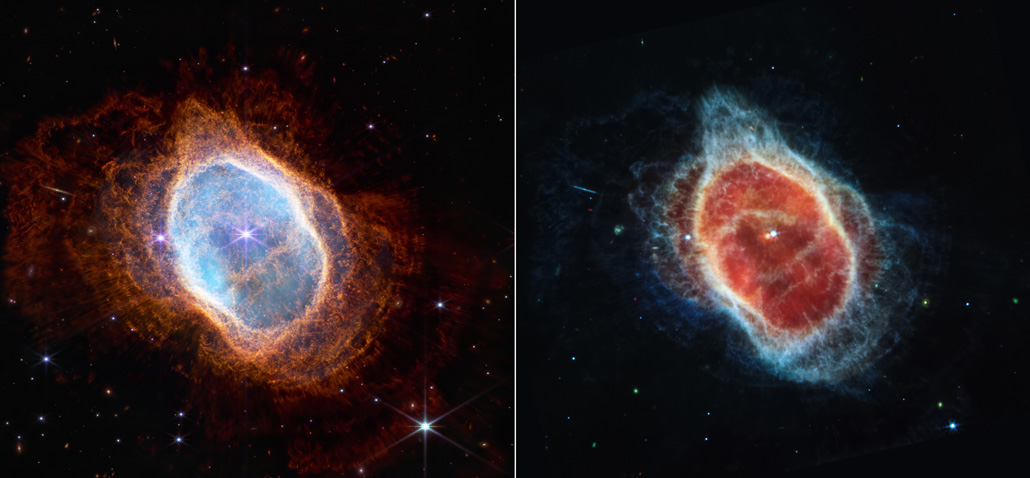
A galactic quintet
Stephan’s Quintet is a group of galaxies about 290 million light-years away that was discovered in 1877. Four of the galaxies are engaged in an intimate gravitational dance, with one member of the group passing through the core of the cluster. (The fifth galaxy is actually much closer to Earth and just appears in a similar spot on the sky.) JWST’s images show off more structure within the galaxies than previous observations did, revealing where stars are being born.
“This is a very important image and area to study,” because it shows the sort of interactions that drive the evolution of galaxies, said JWST scientist Giovanna Giardino of the European Space Agency.
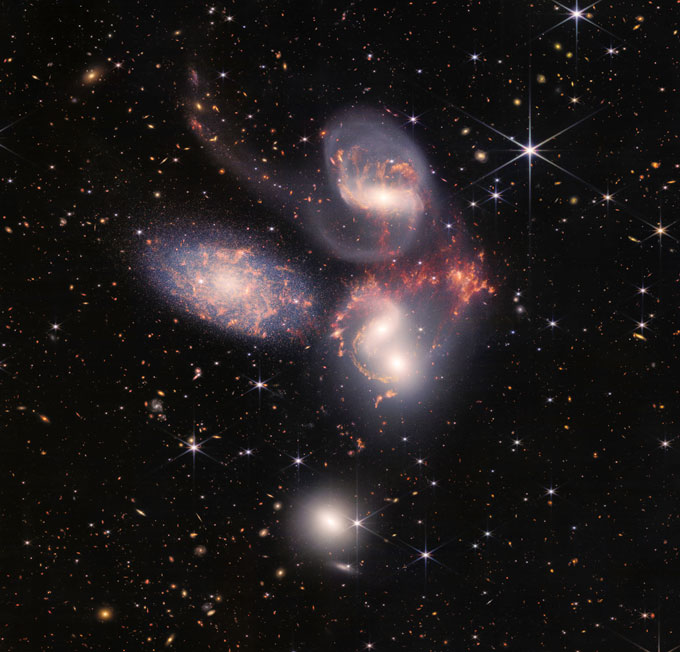
In an image from the MIRI instrument alone, the galaxies look like wispy skeletons reaching towards each other. Two galaxies are clearly close to merging. And in the top galaxy, evidence of a supermassive black hole comes to light. Material swirling around the black hole is heated to extremely high temperatures and glows in infrared light as it falls into the black hole.
An exoplanet’s sky
This “image” is clearly different from the others, but it’s no less scientifically exciting. It shows the spectrum of light from the star WASP 96 as it passes through the atmosphere of its gas giant planet, WASP 96b.
“You get a bunch of what looks like bumps and wiggles to some people but it’s actually full of information content,” said NASA exoplanet scientist Knicole Colón. “You’re actually seeing bumps and wiggles that indicate the presence of water vapor in the atmosphere of this exoplanet.”
The planet is about half the mass of Jupiter and orbits its star every 3.4 days. Previously astronomers thought it had no clouds in its sky, but the new data from JWST show signs of clouds and haze. “There is evidence of clouds and hazes because the water features are not quite as large as we predicted,” Colón said.
A long time coming
These first images and data have been a very long time coming. The telescope that would become JWST was first dreamed up in the 1980s, and the planning and construction suffered years of budget issues and delays (SN: 10/6/21).
The telescope finally launched on December 25. It then had to unfold and assemble itself in space, travel to a gravitationally stable spot about 1.5 million kilometers from Earth, align its insectlike primary mirror made of 18 hexagonal segments and calibrate its science instruments (SN: 1/24/22). There were hundreds of possible points of failure in that process, but the telescope unfurled successfully and got to work.
“We are so thrilled that it works because there’s so much at risk,” says JWST senior project scientist John Mather. “The world has trusted us to put our billions into this and make it go, and it works. So it’s an immense relief.”
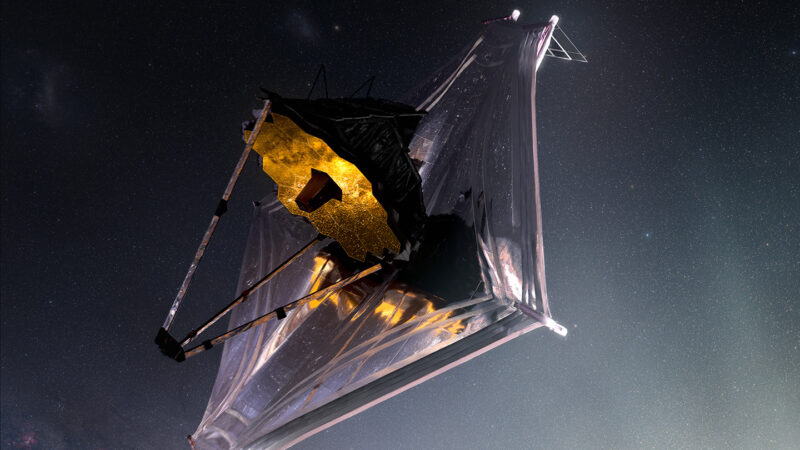
In the months following, the telescope team released teasers of imagery from calibration, which already showed hundreds of distant, never-before-seen galaxies. But the images now being released are the first full-color pictures made from the data scientists will use to start unraveling mysteries of the universe.
“It sees things that I never dreamed were out there,” Mather says.
For the telescope team, the relief in finally seeing the first images was palpable. “It was like, ‘Oh my god, we made it!’” says image processor Alyssa Pagan, also of Space Telescope Science Institute. “It seems impossible. It’s like the impossible happened.”
In light of the expected anticipation surrounding the first batch of images, the imaging team was sworn to secrecy. “I couldn’t even share it with my wife,” says Pontoppidan, leader of the team that produced the first color science images.
“You’re looking at the deepest image of the universe yet, and you’re the only one who’s seen that,” he says, of the first picture released July 11. “It’s profoundly lonely.” Soon, though, the team of scientists, image processors and science writers was seeing something new every day for weeks as the telescope downloaded the first images. “It’s a crazy experience,” Pontoppidan says. “Once in a lifetime.”
For Pagan, the timing is perfect. “It’s a very unifying thing,” she says. “The world is so polarized right now. I think it could use something that’s a little bit more universal and connecting. It’s a good perspective, to be reminded that we’re part of something so much greater and beautiful.”
JWST is just getting started as it now begins its first round of full science operations. “There’s lots more science to be done,” Mather says. “The mysteries of the universe will not come to an end anytime soon.”
Asa Stahl contributed to this story.
What's Your Reaction?
















































